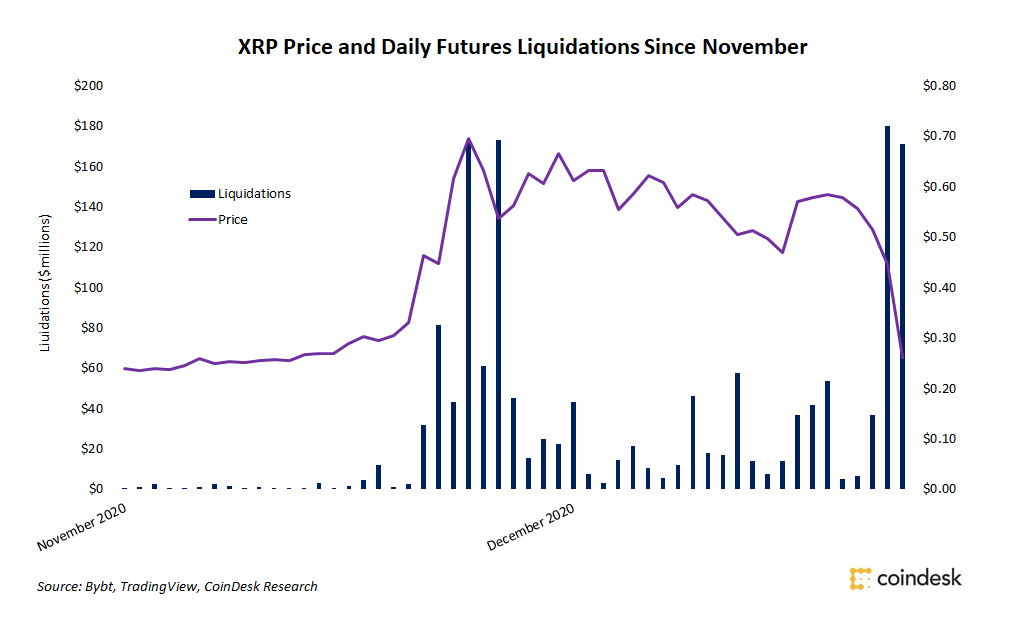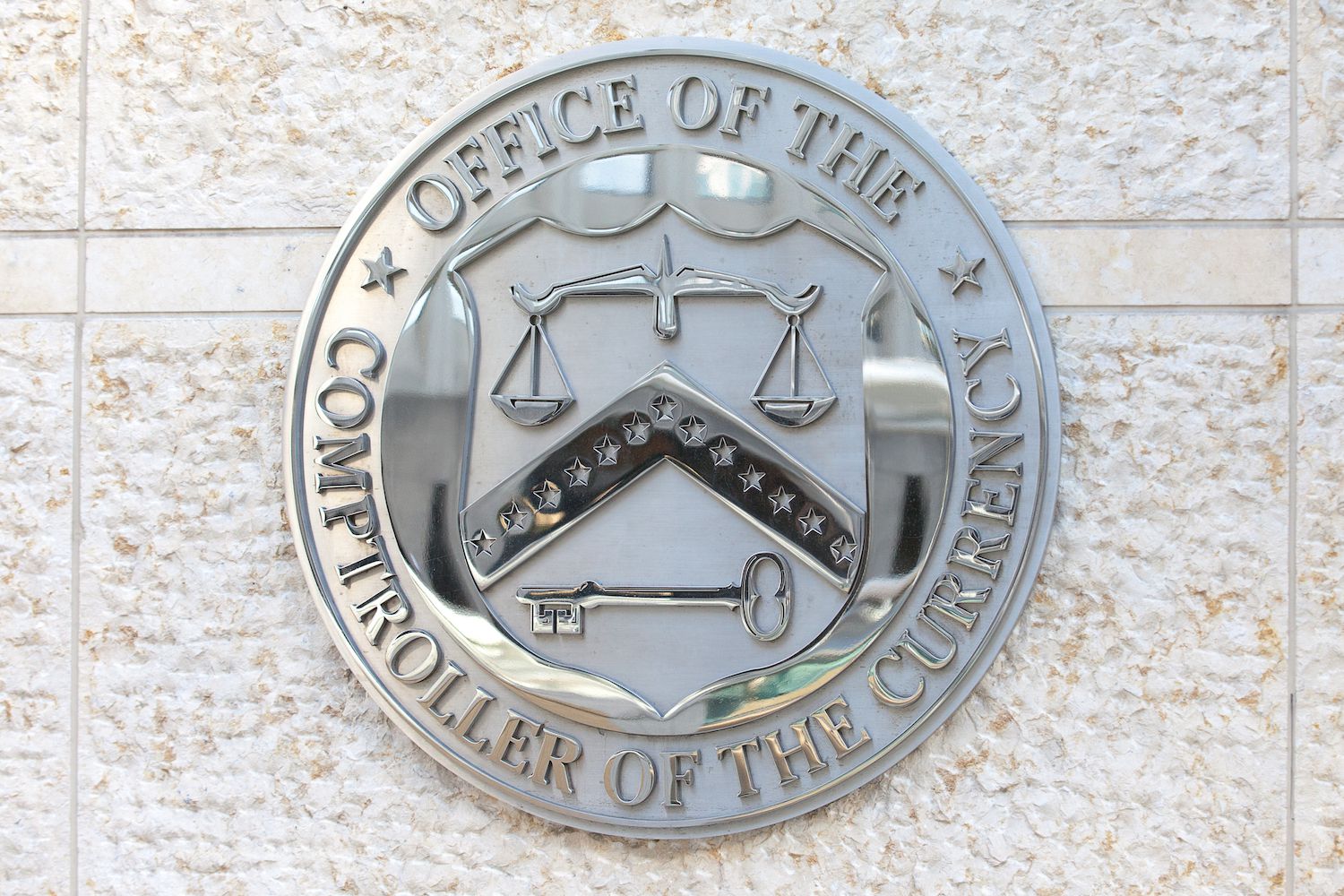First Mover: The Logic Behind Three Arrows’ $200M Grayscale Bet
First Mover: The Logic Behind Three Arrows’ $200M Grayscale Bet
The cryptocurrency investment fund Three Arrows disclosed earlier this month that it had become the biggest investor in the Grayscale Bitcoin Trust, after buying about $200 million of shares in the publicly traded bitcoin fund for a stake of about 6.5%.
“Grayscale is one of the most professional and beneficial companies in the crypto ecosystem,” Three Arrows CEO Su Zhu told CoinDesk at the time.
You’re reading First Mover, CoinDesk’s daily markets newsletter. Assembled by the CoinDesk Markets Team, First Mover starts your day with the most up-to-date sentiment around crypto markets, which of course never close, putting in context every wild swing in bitcoin and more. We follow the money so you don’t have to. You can subscribe here.
But a deeper look at the trade’s details reveals what appears to be a clever way of scooping up extra profit from what otherwise might be a straight bet on bitcoin – by exploiting differences in what institutional and retail investors pay for the fund’s shares.
The strategy of the trade comes from the dual ownership structure of the Grayscale trust, which is essentially a single-asset fund focused on bitcoin, and often referred to by its stock-trading ticker, GBTC.
Big institutional investors can either create new GBTC shares or buy them at a “net asset value” that’s marked daily, based on the value of the underlying bitcoin. They’re required to hold the shares for at least six months, a waiting period that was reduced from 12 months earlier this year.
Retail buyers, on the other hand, can only buy at the market price for publicly traded GBTC shares. And that price is typically about 20% higher than the value of the assets in the fund: the current 52-week average being about 23.5%, according to Bloomberg.
Grayscale is controlled by Digital Currency Group (DCG), the cryptocurrency-focused investment firm that also owns CoinDesk.
It’s unlikely that savvy or institutional investors are buying the shares at the elevated public-market price, according to 21Shares, a European rival to GBTC in the business of providing exchange-traded products, including some linked to bitcoin.
“The institutional and accredited investors that create GBTC are able to resell at large markups,” 21Shares wrote in a newsletter earlier this month.
So for institutional traders like Three Arrows, there’s an opportunity to buy GBTC shares, hold them for six months, and then exit with a nice and easy profit by flipping them to retail buyers at the public-market price. It’s essentially like buying bitcoin, with a high probability of capturing a 20% profit when the trade is unwound.
Such back-of-the-envelope projections assume that the premium holds steady. But it does fluctuate: Just this year, the premium has ranged from 41.3% on February 18 to as little as 7.9% on April 20.
But in May 2017, the premium reached 133% – meaning the public-market price represented roughly double the value of the underlying bitcoin. The premium had briefly gone into negative territory not two months before.

Su Zhu didn’t respond to First Mover’s requests for additional comment.
The trade isn’t riskless. GBTC shareholders remain exposed to bitcoin’s occasionally wild volatility. But the GBTC premium, assuming it holds up, gives the institutional investors a cushion of downside protection.
Even if, after six months, the bitcoin price were 15% below the purchase price, an institutional investor could still theoretically sell the shares on the open market at a profit, assuming the premium held constant.
Of course, there’s no obligation for institutional investors to sell immediately after the six-month holding period ends, but with a 2% annual fee for GBTC, institutional investors could save money by just holding bitcoin.
The biggest risk of the trade might actually come from the possibility that the premium itself narrows or disappears altogether. Competition might cause that to happen, since retail buyers would ostensibly shop around for the bitcoin fund or exchange-traded product that comes with the lowest premium.
There are at least four European companies already offering retail investors similar bitcoin-focused products. Earlier this month, the U.S. asset manager Wilshire Phoenix filed to launch a new “Bitcoin Commodity Trust,” which would run along the same lines and compete with GBTC.
“It’s exciting to see additional proposals for financial products to come to market,” Rayhaneh Sharif-Askary, Grayscale’s director of investor relations and business development, told CoinDesk.
More products coming to market gives retail investors more choice: The buyers would be theoretically less willing to overpay for bitcoin via GBTC shares if they had alternatives. That could cause the premium to shrivel, foiling the ability of institutional investors holding GBTC shares to sell at an easy mark-up.
It might be a question of timing. With more than $3.5 billion in assets under management, the Grayscale Bitcoin Trust is unlikely to lose its target market overnight – especially since U.S. regulators have thus far been loath to approve an application for a bitcoin exchange-traded fund.
The big bet by Three Arrows could be one of two things: either the fund is assuming the GBTC premium has a longer shelf life, or this bet is a final go at the “Grayscale Flip” before premiums decline in the face of growing competition.
Tweet of the day
Bitcoin watch
BTC: Price: $9,590 (BPI) | 24-Hr High: $9,775 | 24-Hr Low: $9,424

Trend: Bitcoin is resting near $9,600 at press time, having activated twin bullish cues with a 4% jump on Monday.
The rise meant the leading cryptocurrency by market value printed a UTC close above the 50-day moving average (MA). That has revived the short-term bullish bias and opened the doors to a re-test of $10,400, according to Adrian Zdunczyk, a chartered market technician and CEO of trading community The BIRB Nest.
Supporting the case for stronger gains is a falling wedge breakout on the 4-hour chart. The pattern indicates the pullback from the June 1 high of $10,429 has ended and the broader uptrend has resumed.
“Breakout target on the upside is located around the $10,700s,” said Zdunczyk.
Further, “hash ribbons,” an indicator used to gauge the health of the miners powering bitcoin’s network, is now moving towards a buy signal. A confirmation is likely over the coming weekend, tweeted Charles Edwards, Digital Asset Manager at Capriole Investments.
“May be this is the last hash rate accumulation zone for a long time,” wrote Edwards. Hash rate refers to the amount of mining power dedicated to mining blocks on the blockchain.
Many analysts believe that prices follow hash rate. In the past, the hash ribbons indicator has marked major trend reversals. For instance, the indicator flashed a buy signal at the end of 2018 and the ensuing bullish move in bitcoin’s price topped out near $14,000 at the end of June 2019.
Overall, both technical indicators and fundamentals suggest the path of least resistance for bitcoin is to the higher side. However, stronger evidence of the bullish breakout would be a convincing move above $10,000. The bulls have failed multiple times in the last two months to keep gains above that psychological hurdle.

Disclosure
The leader in blockchain news, CoinDesk is a media outlet that strives for the highest journalistic standards and abides by a strict set of editorial policies. CoinDesk is an independent operating subsidiary of Digital Currency Group, which invests in cryptocurrencies and blockchain startups.









